Foreword / YouTube Video Review
These speakers were sent to me by Parts Express. I was not paid for this review; however, I believe Parts Express is unlikely to ask for this stuff back since it’s a DIY build.
Also note the bottom section of this review will have some additional stuff that you might be interested in with respect to the DIY aspect of this speaker and verification of the completed speaker’s results.
The review on this website is a brief overview and summary of the objective performance of this speaker. It is not intended to be a deep dive. Moreso, this is information for those who prefer “just the facts” and prefer to have the data without the filler. The video below has more discussion.
< coming soon >
Information and Photos
Specs from the manufacturer can be found here.
- Quick, economical build that delivers surprisingly big sound from a small box
- 1/2" Baltic birch cabinets have been precisely CNC cut for perfect fit-and-finish
- Perfect size for use as small monitors and computer speakers
- This kit is an excellent choice for an amateur speaker building hobbyist
When Paul Carmody first listened to the Overnight Sensations speakers that he designed he exclaimed, “I wish I had a time machine. I would go back to my bedroom when I was in Jr. High or High School and give these to myself. These are the little bookshelf speakers I imagined I had: huge soundstage, deep bass, and tiny box. In reality, back then all I had were some impish Minimus-7s.” The Overnight Sensations are designed to be a quick, economical build that can put out a surprisingly big sound in a small box. Could be a weekender project for an addict, a gift for a teenager (see above), or—in Paul’s case—a set of small, full-bodied monitors that he could listen to while grading papers. To start a do-it-yourselfer off right, this kit includes a pair of high-grade 1/2" Baltic birch cabinets that have been precisely CNC cut and rabbeted for perfect fit-and-finish when assembling the cabinet, as well as perfect driver fit. For the Overnight Sensations’ driver arrangement, Paul selected the versatile Dayton Audio ND20FA-6 3/4" neodymium silk dome tweeter and mated it to the attractive HiVi B4N 4" aluminum midbass woofer. To extract as much bass as possible, Paul decided upon a cabinet size of roughly 0.16 cubic feet (4.5 liters) which is tuned to 53 Hz using a 1-3/8" diameter port that is 6" long. This kit includes nearly everything you need to build a top-notch pair of speakers in no time flat, including: a pair of knock-down cabinets, drivers, ports, crossover components, binding posts, screws, and wire.
The current price is approximately $160 USD for the pair.
Below you can see the kit pieces laid out, getting ready to be built.
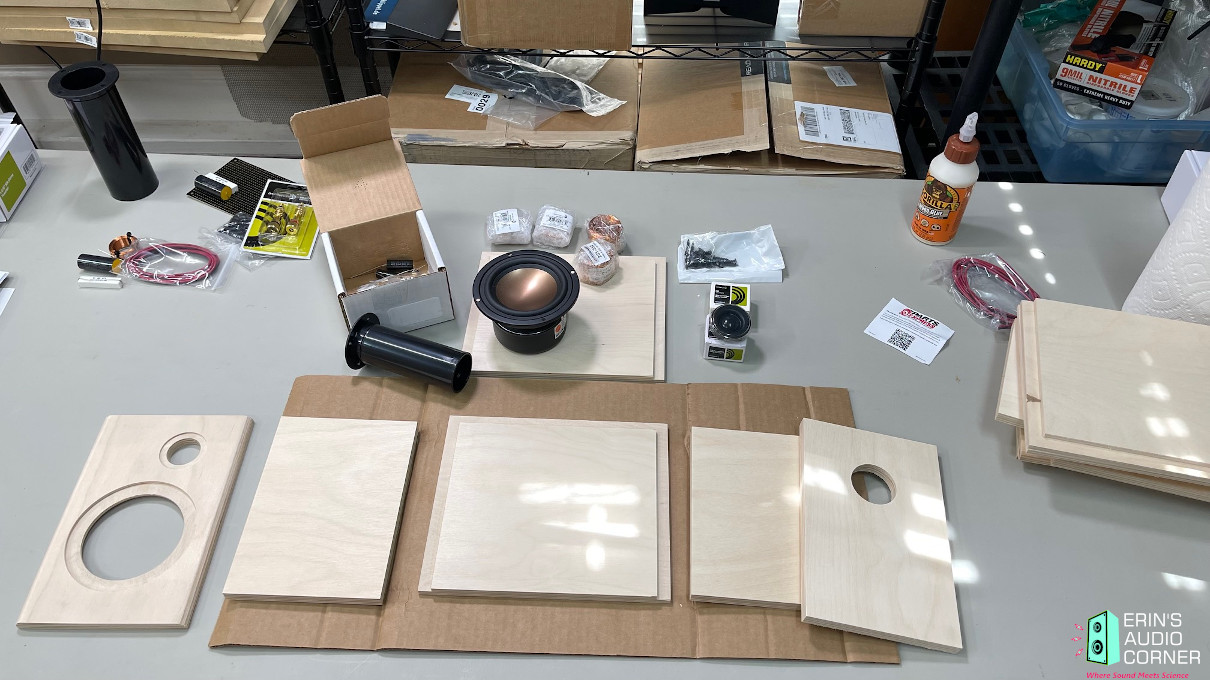
I also used the PCB designed by Matt Grant. It can be purchased for about $18/each through his eBay store. Just google “Overnight Sensations PCB” and you should have no trouble finding it. If you’re on a tight budget it’s not necessary but it is quite helpful and makes things extra tidy if you’re a mess like me.
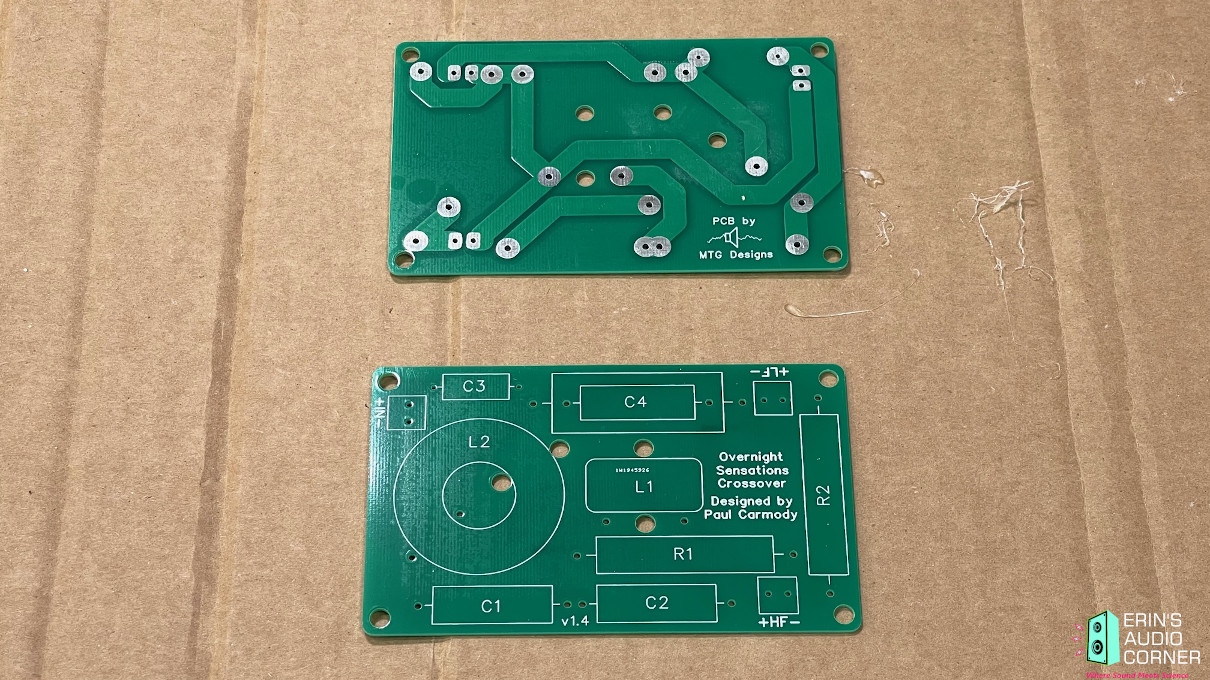
CTA-2034 (SPINORAMA) and Accompanying Data
All data collected using Klippel’s Near-Field Scanner. The Near-Field-Scanner 3D (NFS) offers a fully automated acoustic measurement of direct sound radiated from the source under test. The radiated sound is determined in any desired distance and angle in the 3D space outside the scanning surface. Directivity, sound power, SPL response and many more key figures are obtained for any kind of loudspeaker and audio system in near field applications (e.g. studio monitors, mobile devices) as well as far field applications (e.g. professional audio systems). Utilizing a minimum of measurement points, a comprehensive data set is generated containing the loudspeaker’s high resolution, free field sound radiation in the near and far field. For a detailed explanation of how the NFS works and the science behind it, please watch the below discussion with designer Christian Bellmann:
The reference plane in this test is at the tweeter.
Measurements are provided in a format in accordance with the Standard Method of Measurement for In-Home Loudspeakers (ANSI/CTA-2034-A R-2020). For more information, please see this link.
CTA-2034 / SPINORAMA:
The On-axis Frequency Response (0°) is the universal starting point and in many situations it is a fair representation of the first sound to arrive at a listener’s ears.
The Listening Window is a spatial average of the nine amplitude responses in the ±10º vertical and ±30º horizontal angular range. This encompasses those listeners who sit within a typical home theater audience, as well as those who disregard the normal rules when listening alone.
The Early Reflections curve is an estimate of all single-bounce, first-reflections, in a typical listening room.
Sound Power represents all of the sounds arriving at the listening position after any number of reflections from any direction. It is the weighted rms average of all 70 measurements, with individual measurements weighted according to the portion of the spherical surface that they represent.
Sound Power Directivity Index (SPDI): In this standard the SPDI is defined as the difference between the listening window curve and the sound power curve.
Early Reflections Directivity Index (EPDI): is defined as the difference between the listening window curve and the early reflections curve. In small rooms, early reflections figure prominently in what is measured and heard in the room so this curve may provide insights into potential sound quality.
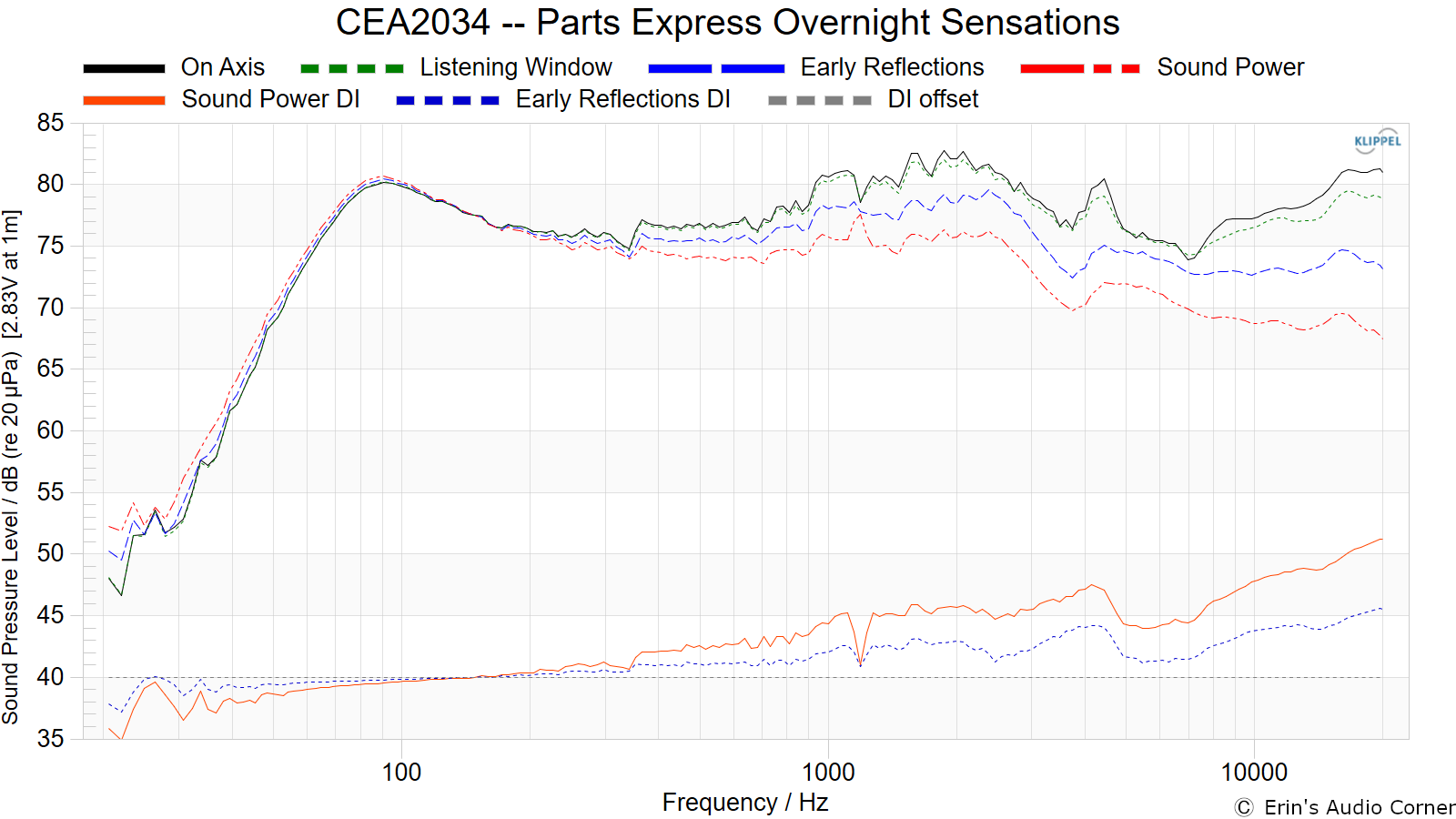
Early Reflections Breakout:
Floor bounce: average of 20º, 30º, 40º down
Ceiling bounce: average of 40º, 50º, 60º up
Front wall bounce: average of 0º, ± 10º, ± 20º, ± 30º horizontal
Side wall bounces: average of ± 40º, ± 50º, ± 60º, ± 70º, ± 80º horizontal
Rear wall bounces: average of 180º, ± 90º horizontal

Estimated In-Room Response:
In theory, with complete 360-degree anechoic data on a loudspeaker and sufficient acoustical and geometrical data on the listening room and its layout it would be possible to estimate with good precision what would be measured by an omnidirectional microphone located in the listening area of that room. By making some simplifying assumptions about the listening space, the data set described above permits a usefully accurate preview of how a given loudspeaker might perform in a typical domestic listening room. Obviously, there are no guarantees, because individual rooms can be acoustically aberrant. Sometimes rooms are excessively reflective (“live”) as happens in certain hot, humid climates, with certain styles of interior décor and in under-furnished rooms. Sometimes rooms are excessively “dead” as in other styles of décor and in some custom home theaters where acoustical treatment has been used excessively. This form of post processing is offered only as an estimate of what might happen in a domestic living space with carpet on the floor and a “normal” amount of seating, drapes and cabinetry.
For these limited circumstances it has been found that a usefully accurate Predicted In-Room (PIR) amplitude response, also known as a “room curve” is obtained by a weighted average consisting of 12 % listening window, 44 % early reflections and 44 % sound power. At very high frequencies errors can creep in because of excessive absorption, microphone directivity, and room geometry. These discrepancies are not considered to be of great importance.

Horizontal Frequency Response (0° to ±90°):

Vertical Frequency Response (0° to ±40°):

Horizontal Contour Plot (normalized):
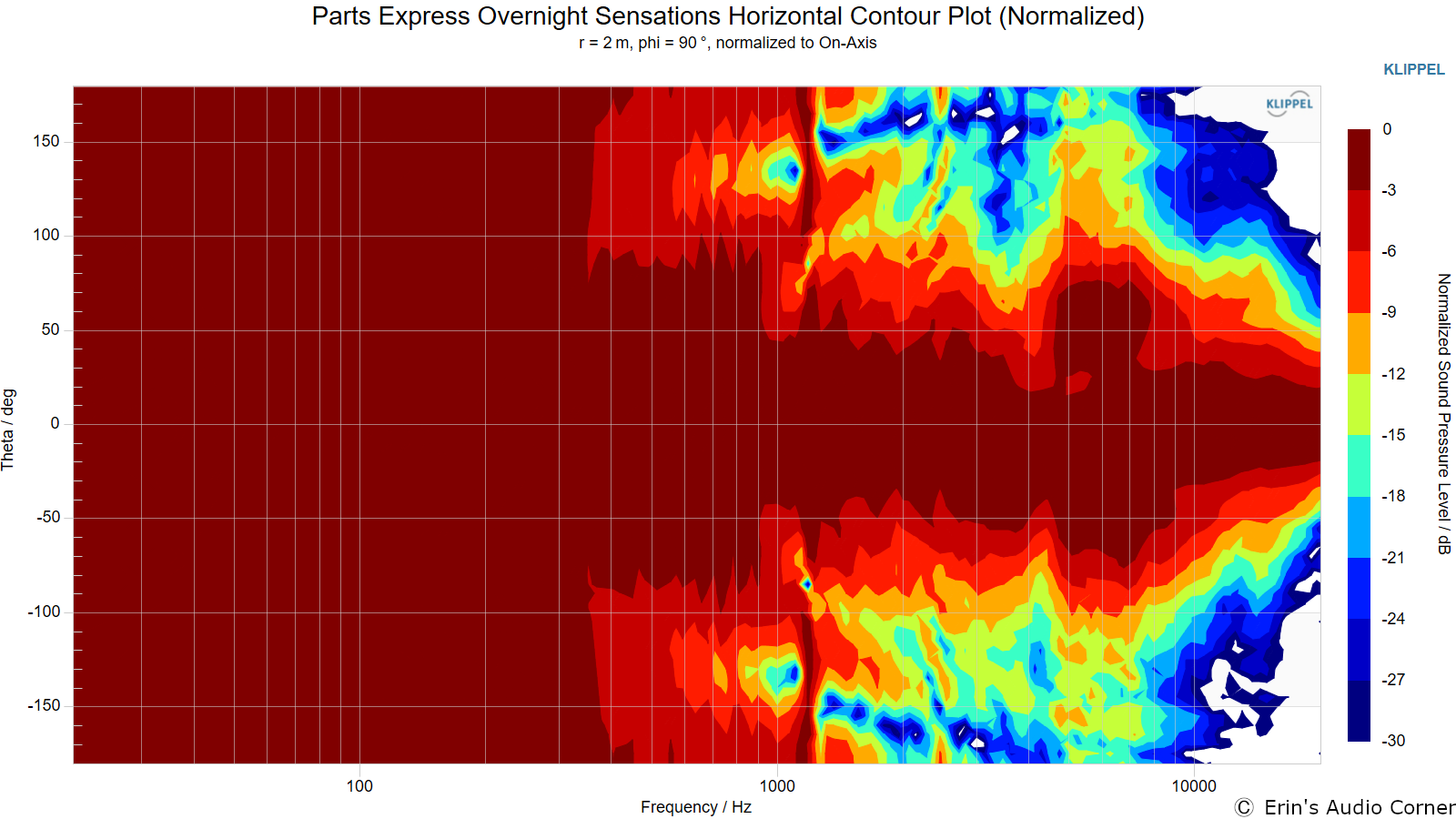
Vertical Contour Plot (normalized):
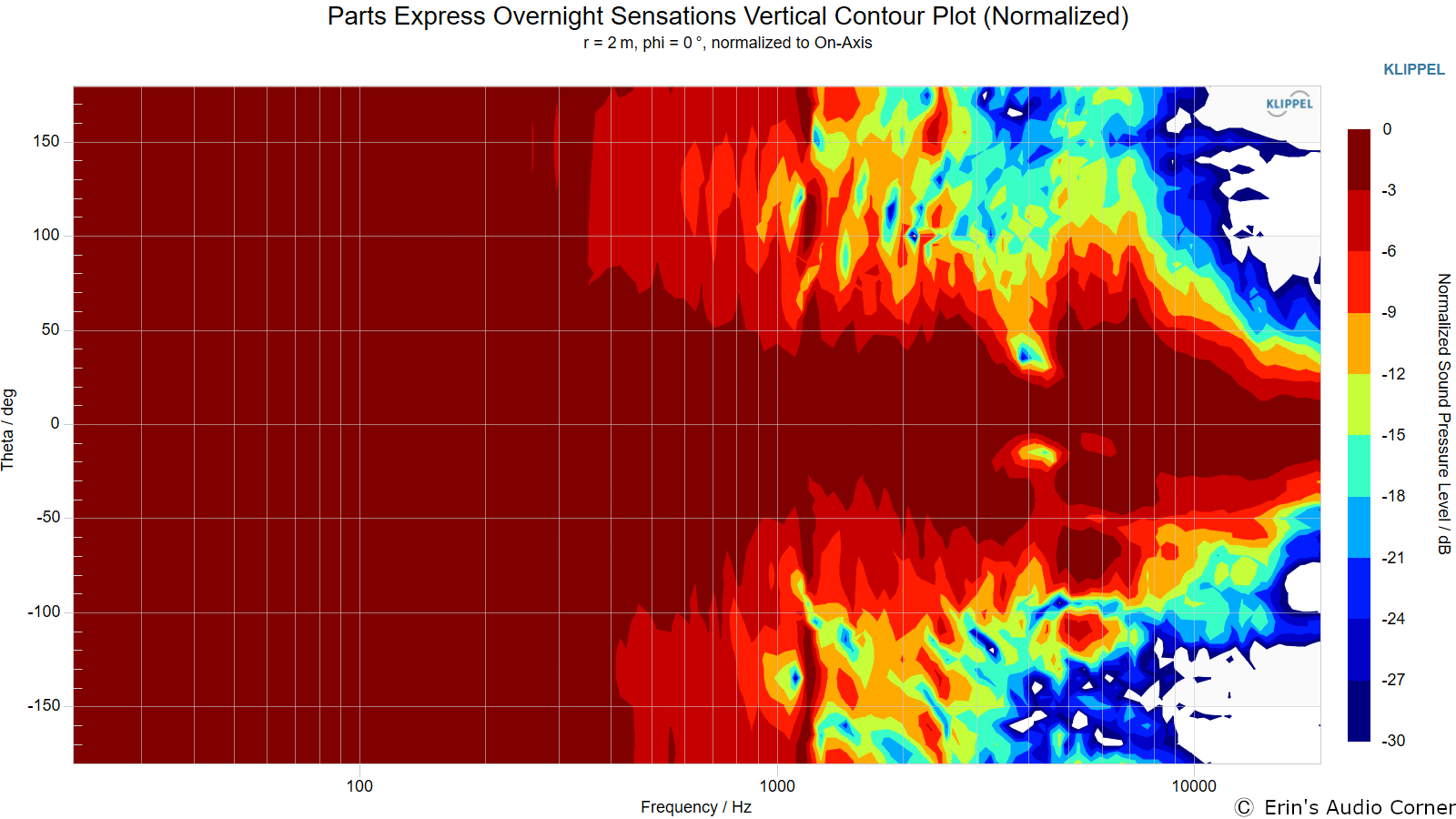
“Globe” Plots
Horizontal Polar (Globe) Plot:
This represents the sound field at 2 meters - above 200Hz - per the legend in the upper left.
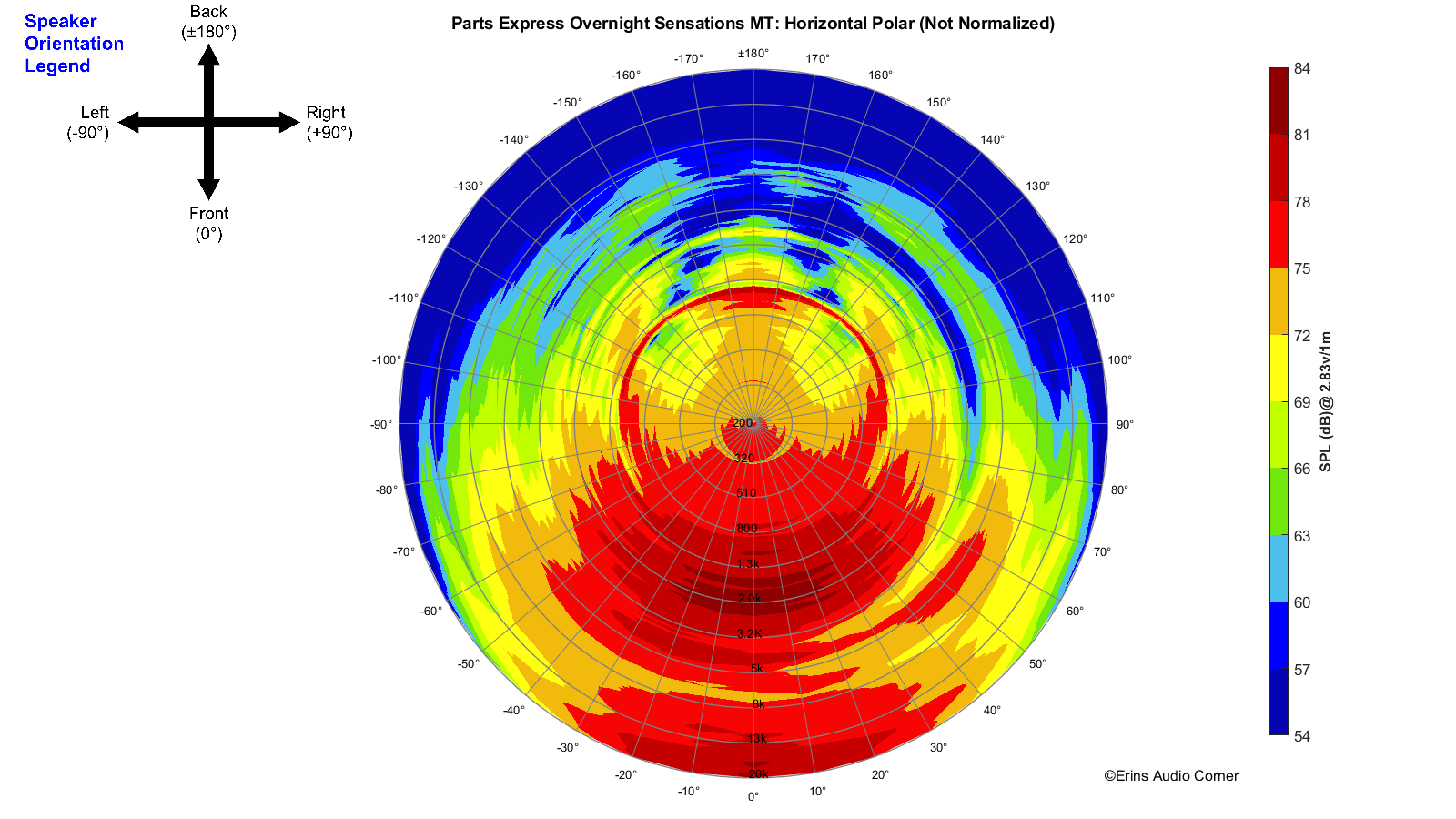
Vertical Polar (Globe) Plot:
This represents the sound field at 2 meters - above 200Hz - per the legend in the upper left.

Additional Measurements
Response Linearity
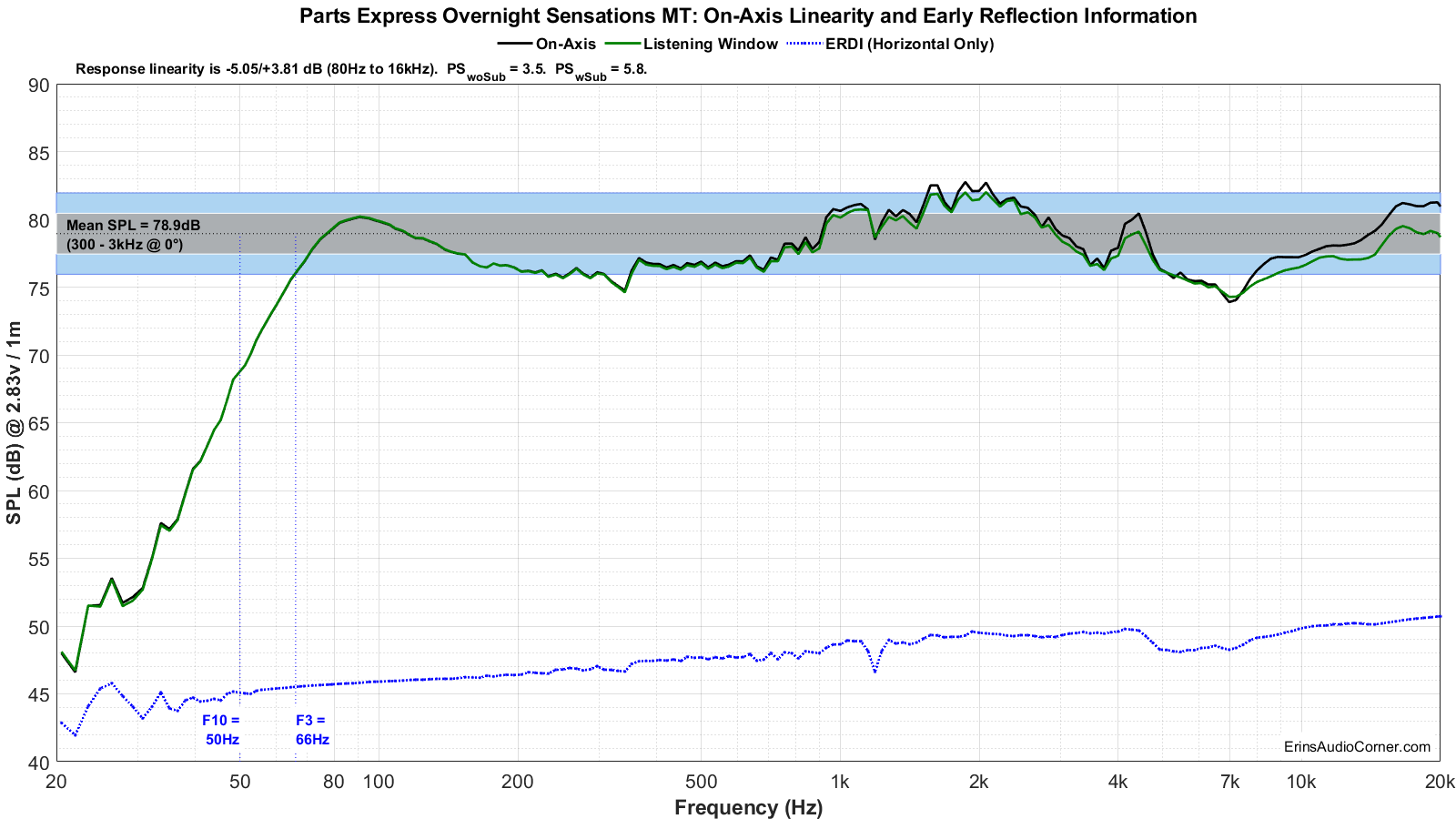
Impedance Magnitude and Phase

Step Response

Group Delay
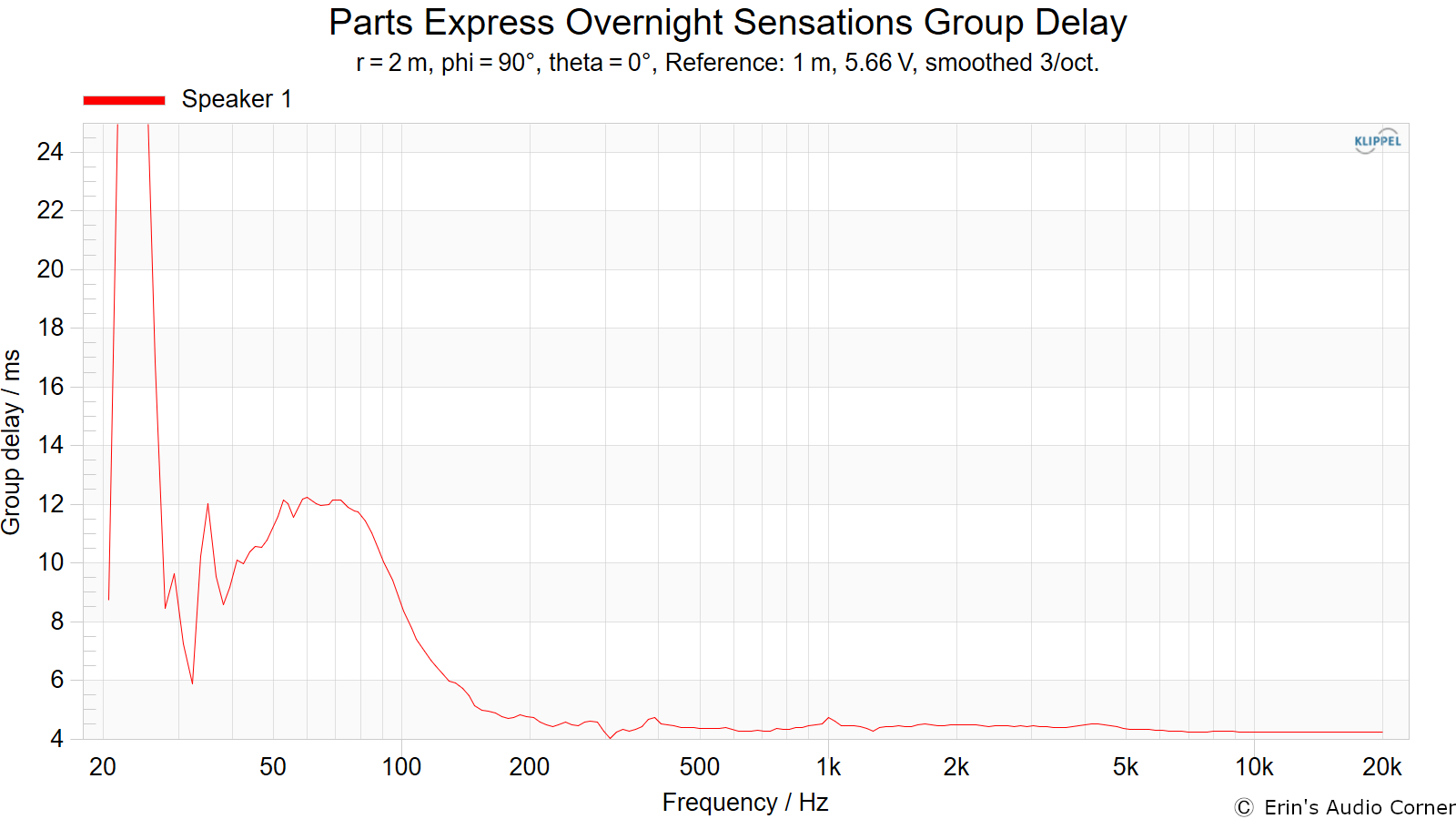
Harmonic Distortion
Harmonic Distortion at 86dB @ 1m:
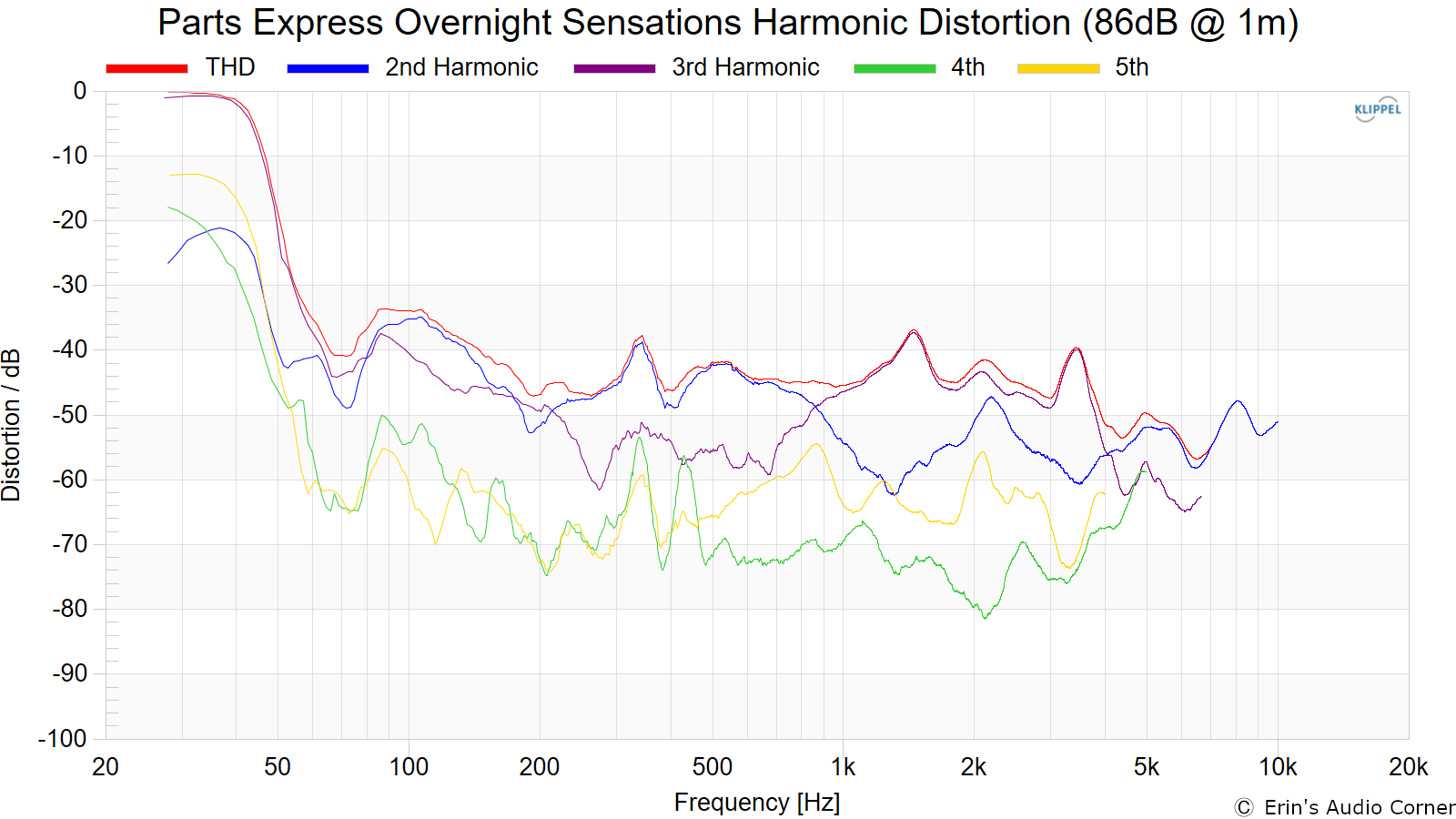
Harmonic Distortion at 96dB @ 1m:
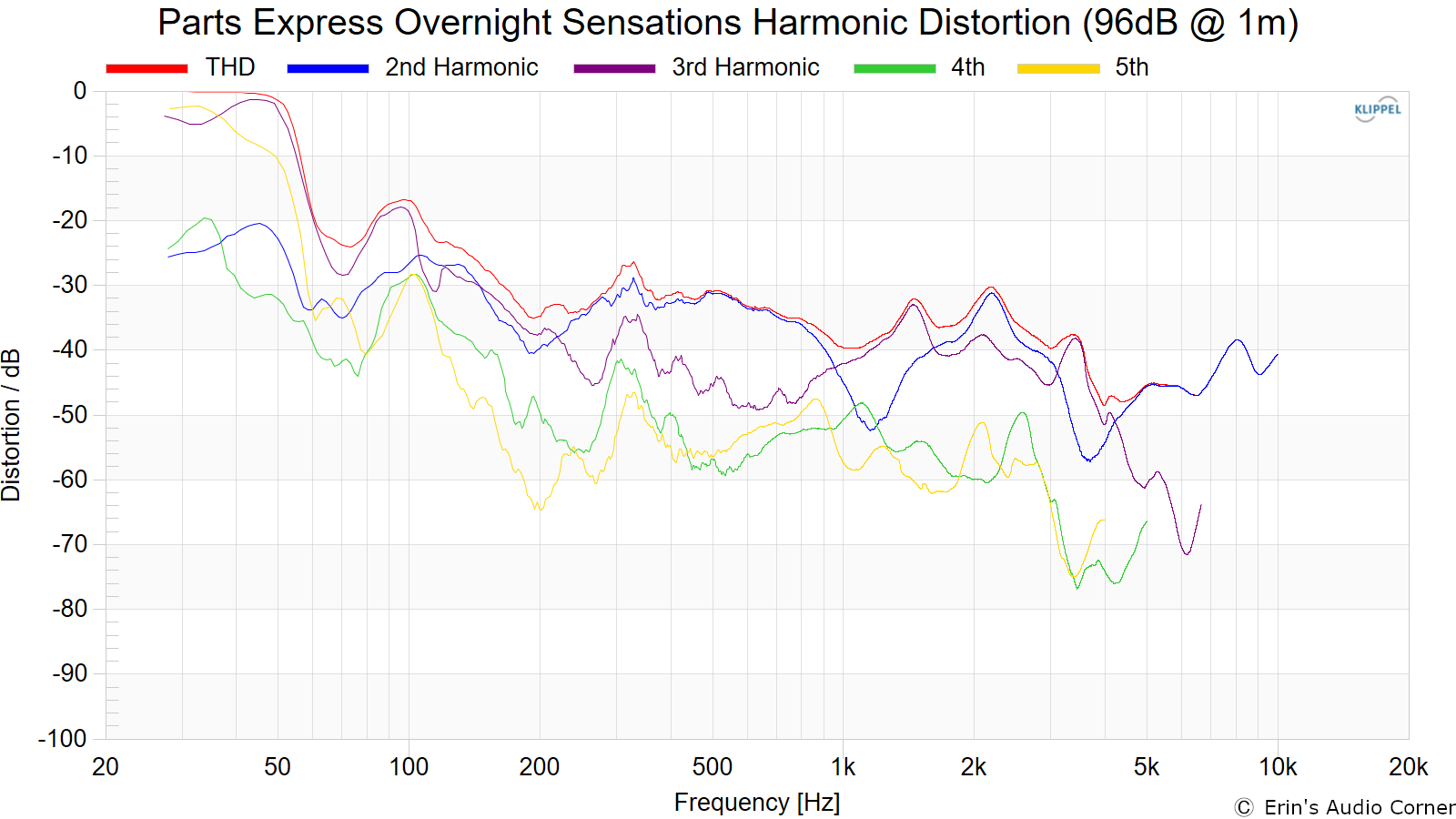
Dynamic Range (Instantaneous Compression Test)
The below graphic indicates just how much SPL is lost (compression) or gained (enhancement; usually due to distortion) when the speaker is played at higher output volumes instantly via a 2.7 second logarithmic sine sweep referenced to 76dB at 1 meter. The signals are played consecutively without any additional stimulus applied. Then normalized against the 76dB result.
The tests are conducted in this fashion:
- 76dB at 1 meter (baseline; black)
- 86dB at 1 meter (red)
- 96dB at 1 meter (blue)
- 102dB at 1 meter (purple)
The purpose of this test is to illustrate how much (if at all) the output changes as a speaker’s components temperature increases (i.e., voice coils, crossover components) instantaneously.

Comparison vs Simulation
Once my testing of the completed speaker was finished I then disconnected the crossover and measured the response of the individual drivers (while still attached to the cabinet). Using KLIPPEL’s Near Field Scanner “Export” module I then exported the magnitude+phase of each driver as a text file (360° vertical and horizontal in 10° increments). I imported those files to VituixCAD along with the impedance phase+magnitude and used the crossover schematic provided by Parts-Express to verify the performance and then to tinker a bit to see if I could improve the crossover and overall performance. You can see this matches nearly perfectly to the measured performance of the completed speaker with the differences being due to the real impedance vs the simulated impedance.
While I am not providing my own crossover suggestions, you can find discussion on this in my Facebook group (link at the bottom of this review). Additionally, I also have a link to the raw data should anyone be interested in trying their own hand at simulating the crossover and possibly making tweaks. That data can be found here (dropbox link). Just make sure you flip the polarity of the tweeter in the simulation! Long story on why the polarity is wrong… but just make sure you don’t forget to do that!
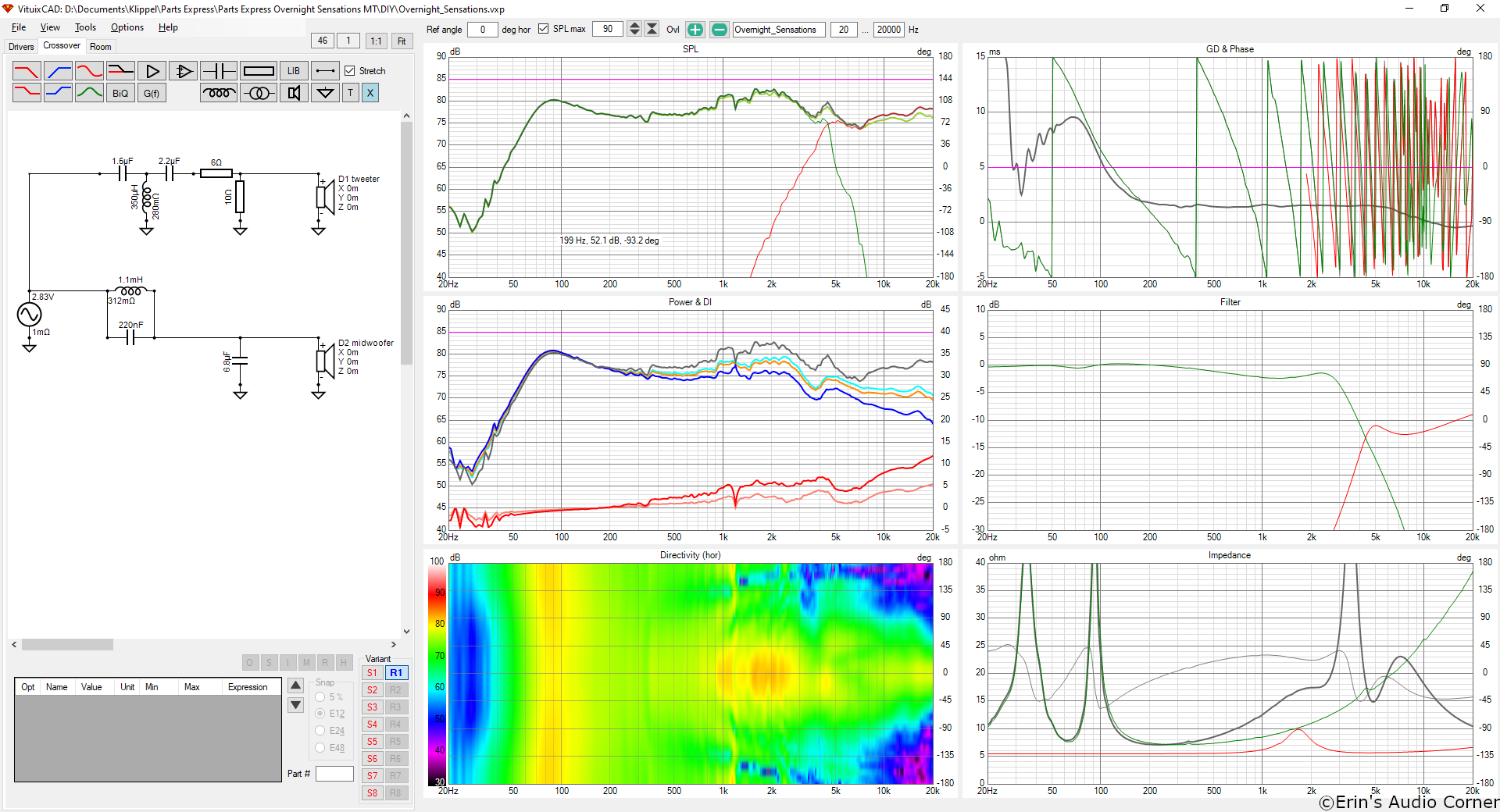
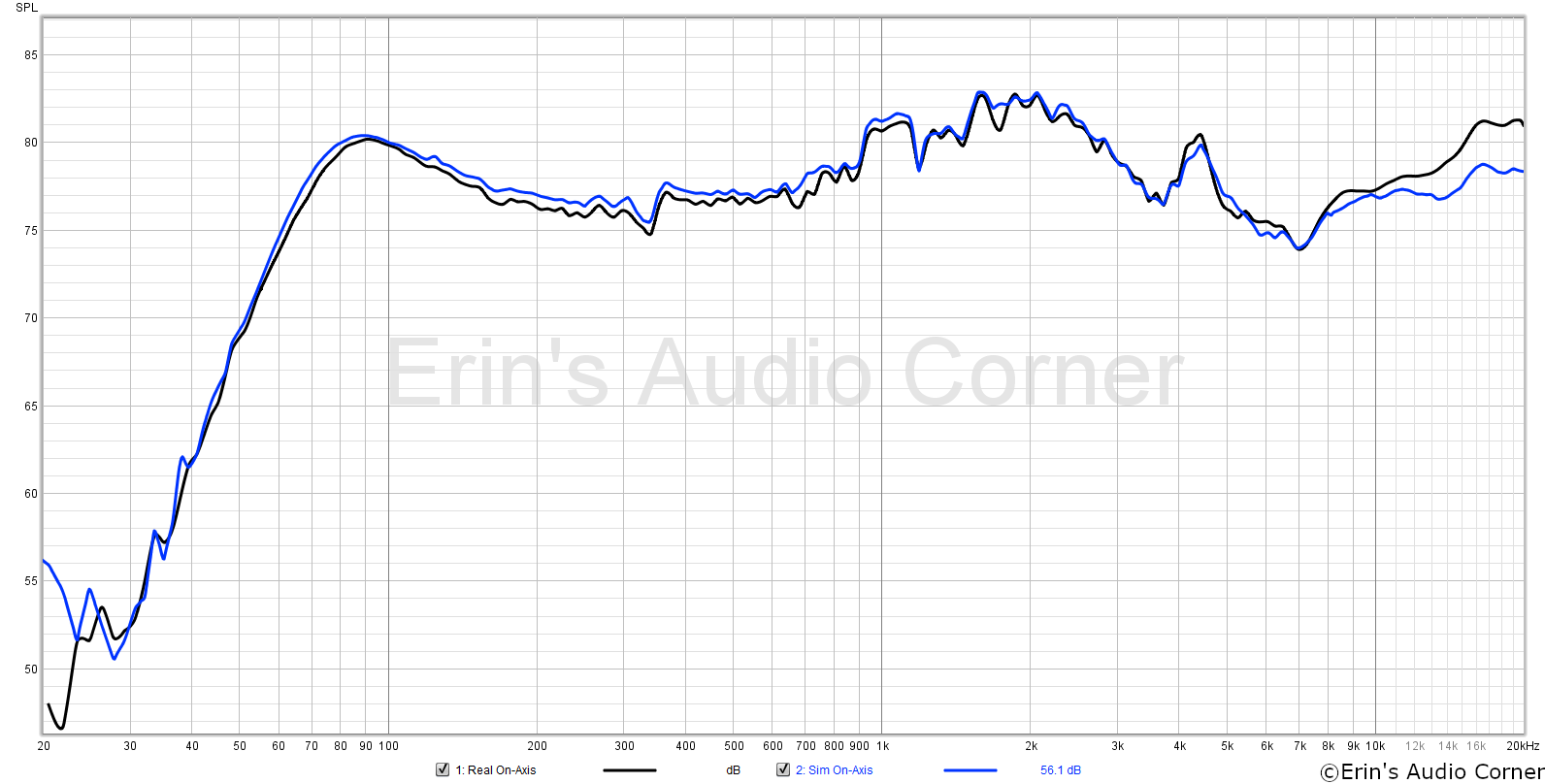

Parting / Random Thoughts
As stated in the Foreword, this written review is purposely a cliff’s notes version. For details about the performance (objectively and subjectively) please watch the YouTube video. But a couple quick notes based on my listening and what I see in the data:
- Linearity is quite poor. I was hoping for better performance here if I’m being honest. Especially given the vast amount of praise these speakers have received over the years. I don’t want to sound super critical of a DIY design because half the fun is in the build. But, at the price, there are pre-built alternatives that offer better value if that’s what you’re after. The Neumi BS5 I reviewed a couple years ago isn’t perfect but it’s better than this by a good bit and costs about $50 less, ready to go. In my humble opinion, your purchase decision of the Overnight Sensation kit boils down to the “getting there is half the fun” aspect more than the performance of the completed project.
- Not surprisingly, the output capability is rather low. But I’m not knocking the speaker. Rather, I’m essentially stating the obvious. With a 4-inch midwoofer I think most understand these aren’t mean for high SPL levels. However, having the compression data is helpful to get a better objective understanding of the limits.
Contribute / Support
If you find this review helpful and want to help support the cause there are a few ways you can do so below. Your support helps me pay for new items to test, hardware, miscellaneous items needed for testing and costs of the site’s server space and bandwidth. Any help is very much appreciated.
Join my Patreon: Become a Patron!
Or using my product affiliate link below to buy this speaker or anything they sell that you want to try out. This will earn me a small commission at no additional cost to you. You can use these links anytime, now or in the future.
You can also join my Facebook and YouTube pages if you’d like to follow along with updates.